Past and Future of Nippon Subculture ~No.2 Kamigami and God~
こんにちは、コバヤシです。シンガポールでは春節、チャイニーズ・ニューイヤーの時期が近づいてきました。コロナの影響で色々制限があるとはいえ、中華系が多いシンガポールでは一年の内で一番盛り上がるホリデイだと思います。街の中も電飾で飾られ、正月飾りを売るお店は大賑わいを見せています。
Hello, this is Kobayashi. The Chinese New Year, or Spring Festival, is approaching in Singapore. Although there are some restrictions due to the influence of Corona, I think this is the most exciting holiday of the year in Singapore where there are many Chinese Singaporian. The streets are decorated with lights and the stores selling New Year’s decorations are very busy.
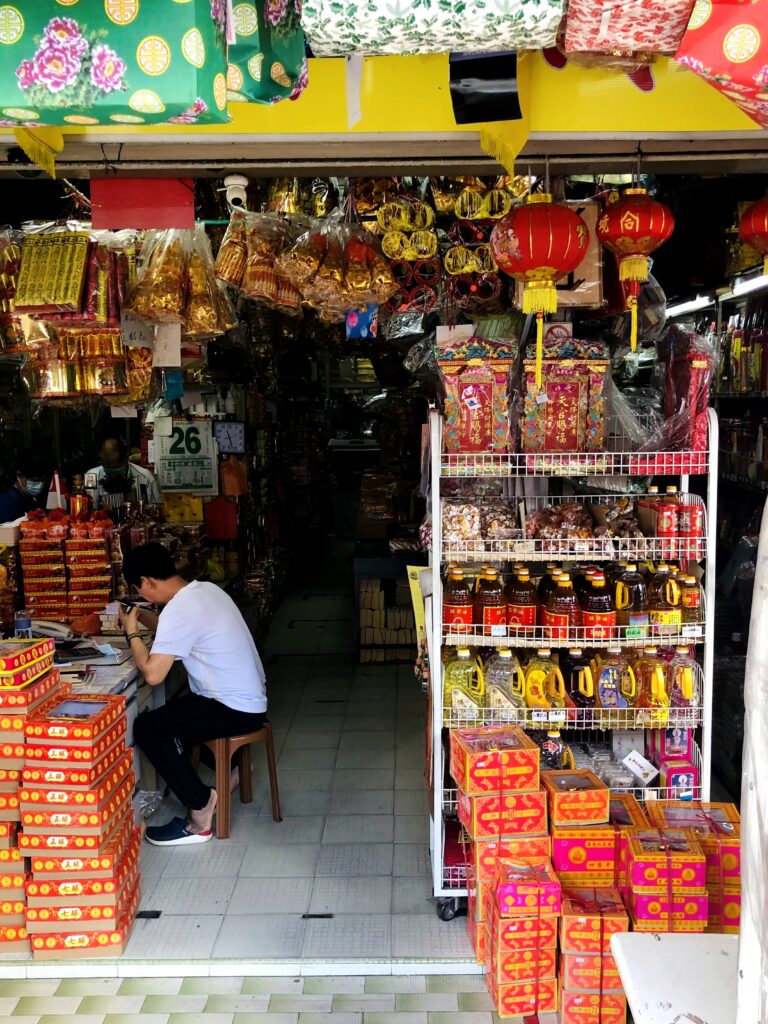
多文化主義を謳うシンガポールではキリスト教、イスラム教、ヒンドゥー教、仏教それぞれの大きな祭日はナショナル・ホリデイとなっています。一月一日はいちおう元旦、しかし日本ほど重視されていない感じです。一日だけ休んですぐ次の日から働きだします。最近は日本でも正月からお店が開いていることが多くなりましたが、シンガポールでは三が日もないのであまり厳かさは感じられません。二月は春節、コロナでなければ中華系の人々が親戚を訪れるために民族大移動がおきます。四月には十字架に架けられたイエスキリストの受難をしのぶ祭日、グッド・フライデー(聖金曜日)、5月にはイスラムのラマダン(断食)開けをお祝いするハリラヤ。普段であれば仮設のお祭り会場ができて盛り上がりますが昨年はコロナのため行われませんでした、多分今年もないでしょう(ガックリ)。そして、ブッダの誕生を祝う仏誕節も五月です。これは日本いたときは知りませんでした。11月にはヒンドゥー教の正月にあたるディーパバリ(光の祭典)、リトル・インディアでは各所に電飾が飾られ華やかな雰囲気です。そして12月にクリスマス、と少しずつですが各宗教のことを知ることができます。各祭日は旧暦やイスラム暦、ヒンドゥー暦に基づいているので年によって若干日程が異なります。普段はグレゴリオ暦を使うことが当たり前になっていますが(少なくとも僕は)、暦を創り民にそれを使わせるということは支配の証、ということは未だに主だった世界は西洋的、キリスト教的な視点や思考下にあるということですが、それとは異なる時間の捉え方、文化・価値観があるのだということをカレンダーや祭日を通じて改めまして認識させられました。
In Singapore, a multicultural country, the major holidays of Christianity, Islam, Hinduism and Buddhism are celebrated as National Holidays. January 1st is New Year’s Day, but it is not as important as it is in Japan. People take one day off and start working the next day. Recently, many stores in Japan are open from New Year’s Day, but in Singapore, it is not solemn because there are no “Sanganichi”(The first three days of the New Year). February is the Chinese New Year, and if it is not Corona, there is a huge migration of Chinese people to visit their relatives. In April, there is Good Friday to commemorate the crucifixion of Jesus Christ, and in May, there is Hari Raya to celebrate the end of the Islamic month of Ramadan. Normally, there would be a festival fair, but last year it was not held due to corona, and probably not this year either (bummer). The Buddha’s birthday is also celebrated in May. I didn’t know this when I was in Japan. In November, there is Deepavali (Festival of Lights), which is the Hindu New Year, and Little India is decorated with lights and a gorgeous atmosphere. Christmas is in December, and little by little, you can learn about each religion. Each festival is based on the lunar, Islamic, or Hindu calendar, so the dates vary slightly from year to year. We usually take the Gregorian calendar for granted (at least I do), but creating a calendar and forcing people to use it is a sign of domination, which means that the main world is still under Western and Christian perspectives and thinking, but it also means that there are different ways of perceiving time, culture and values. Through the calendar and holidays, I was reminded that there are different ways of perceiving time, culture and values.
シンガポール街中では様々な寺院をみることができます。
There are many temples in the city of Singapore.
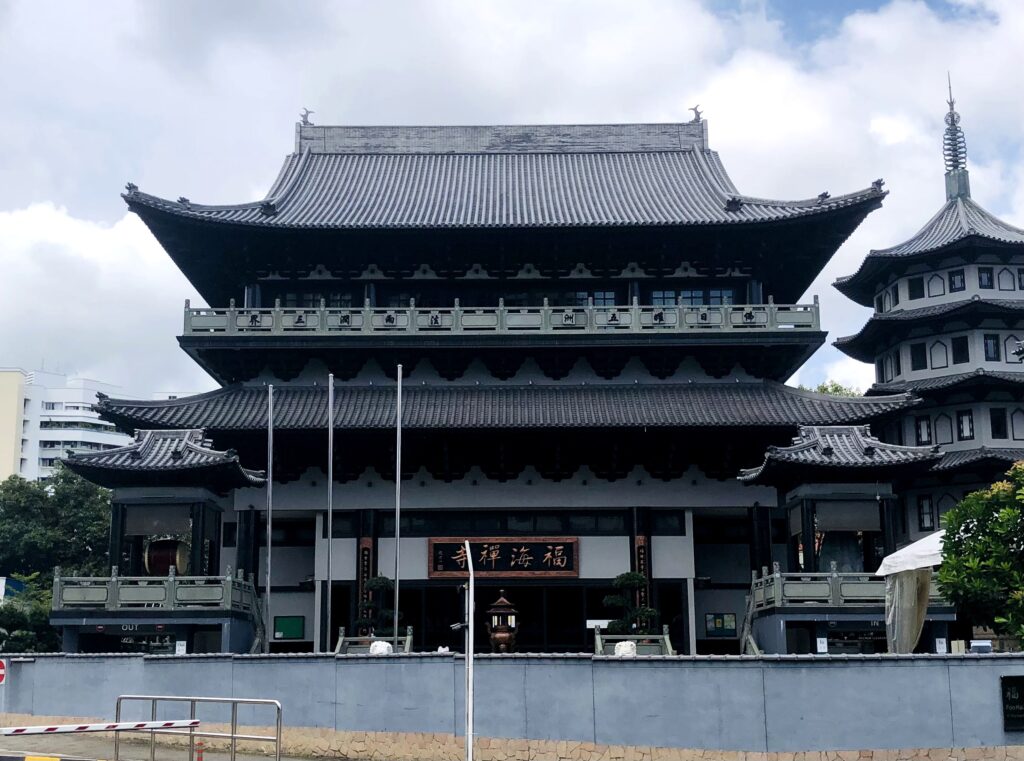
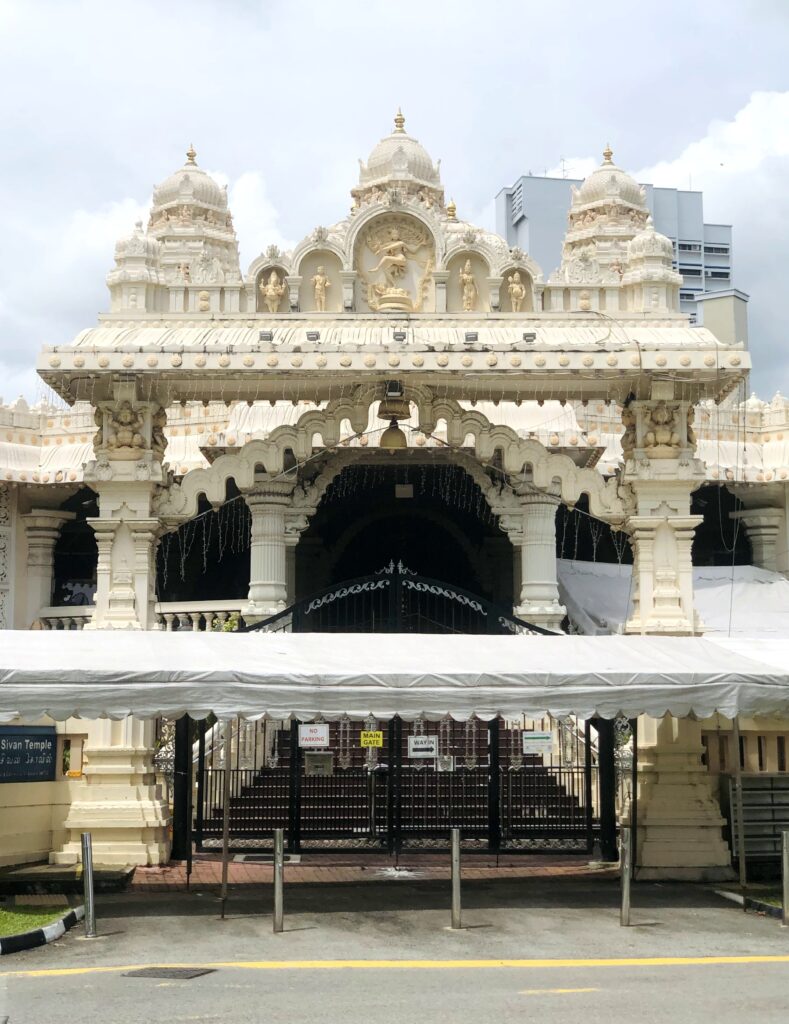
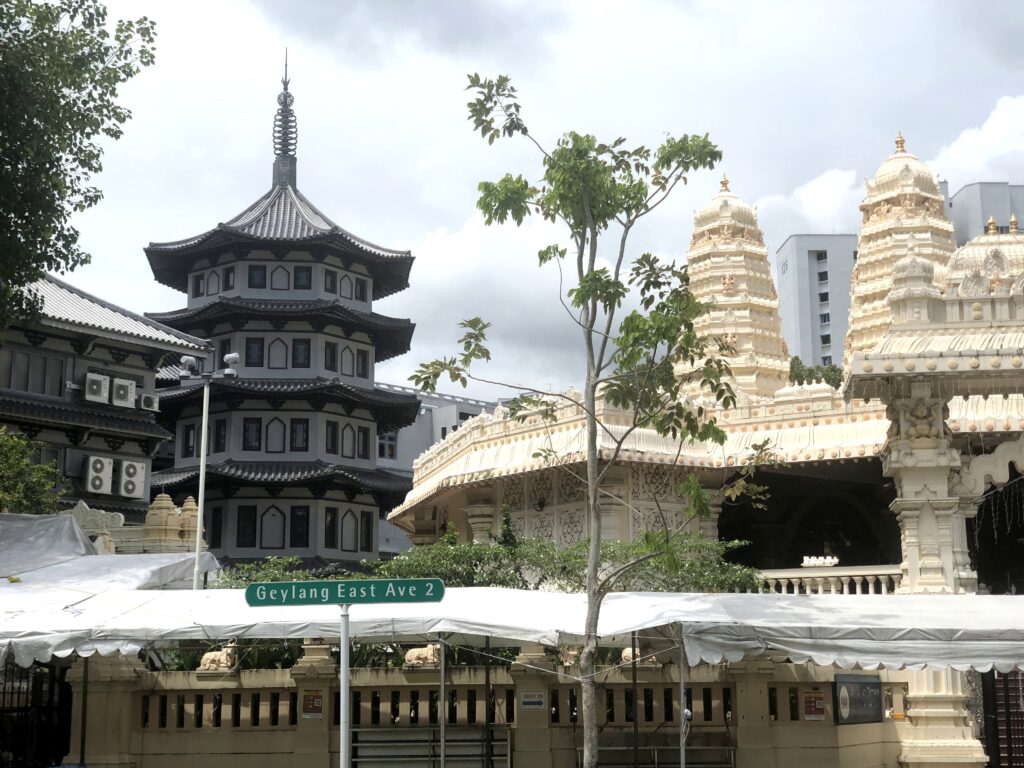
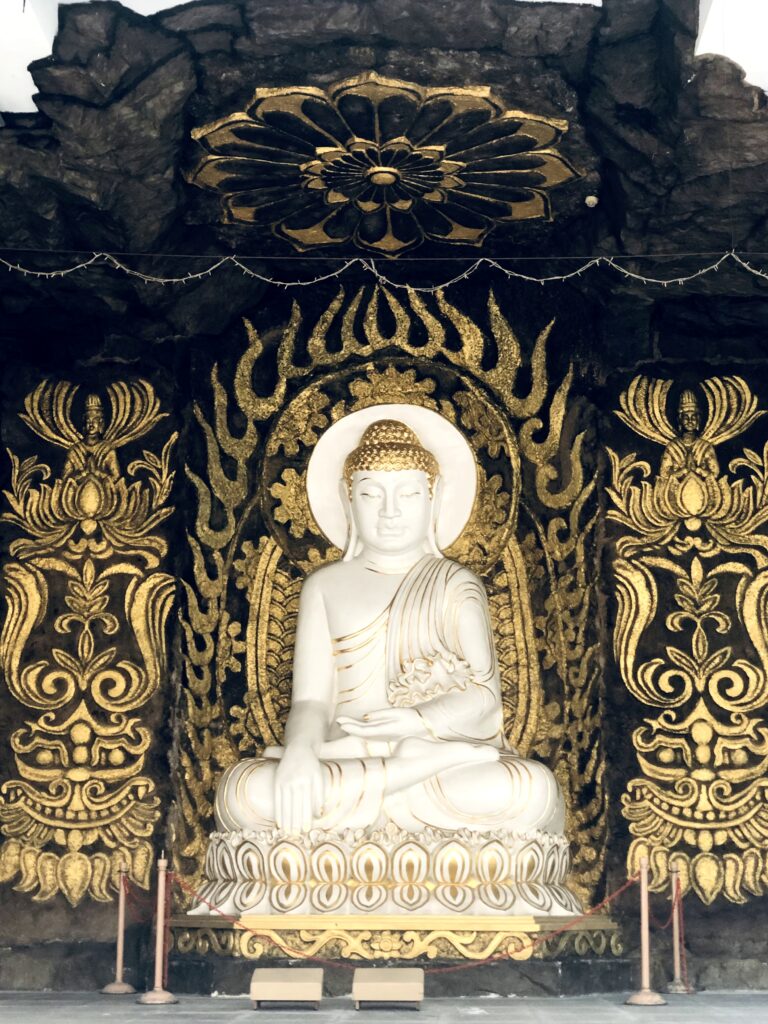
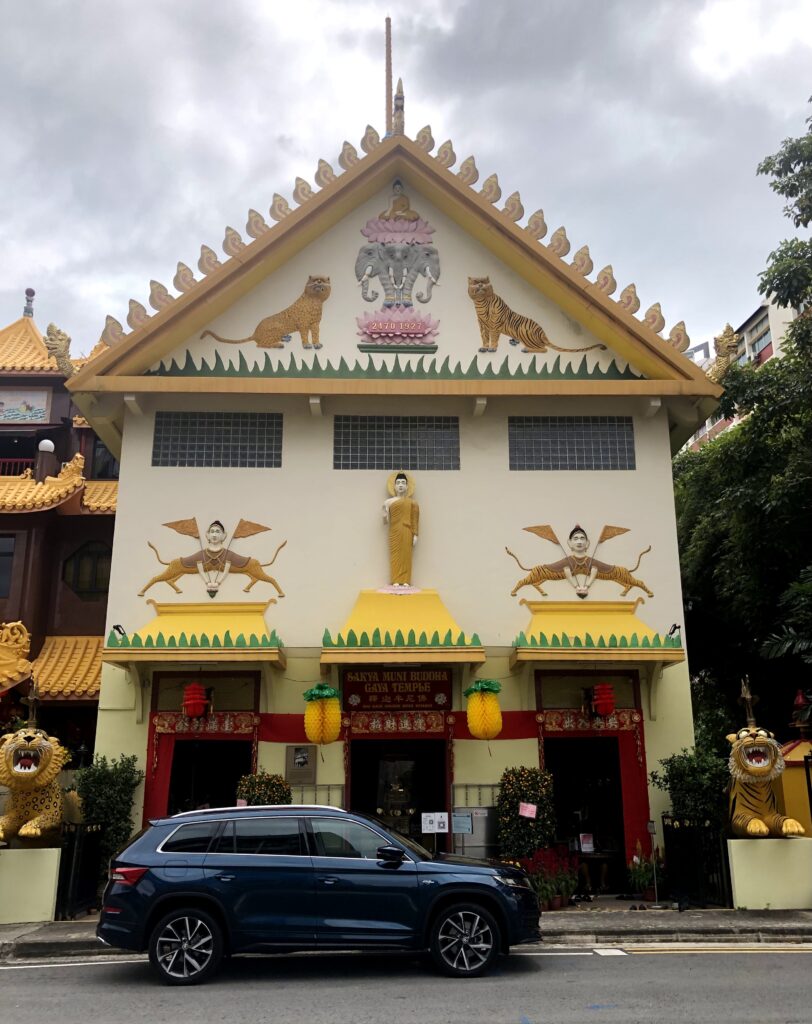
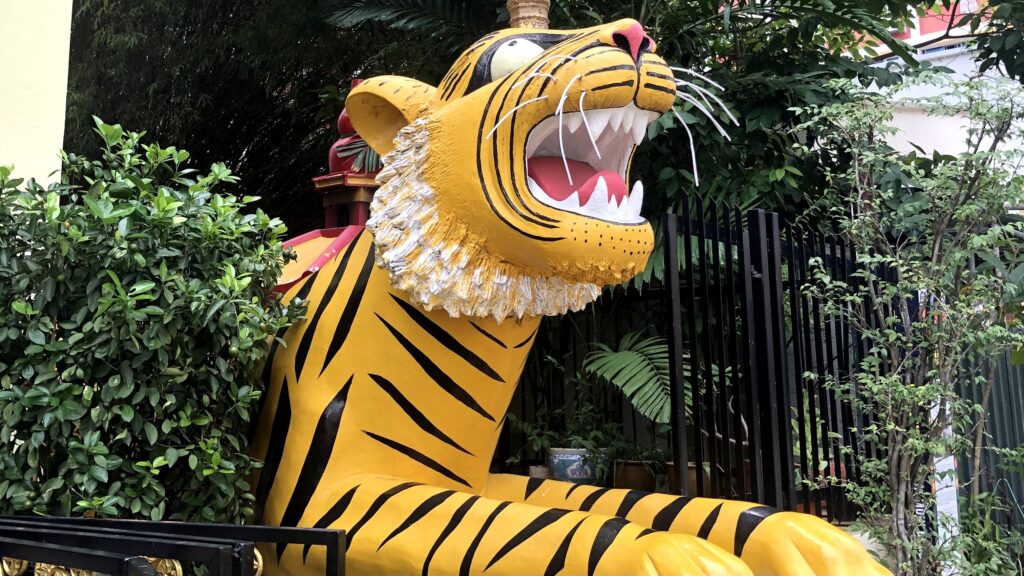
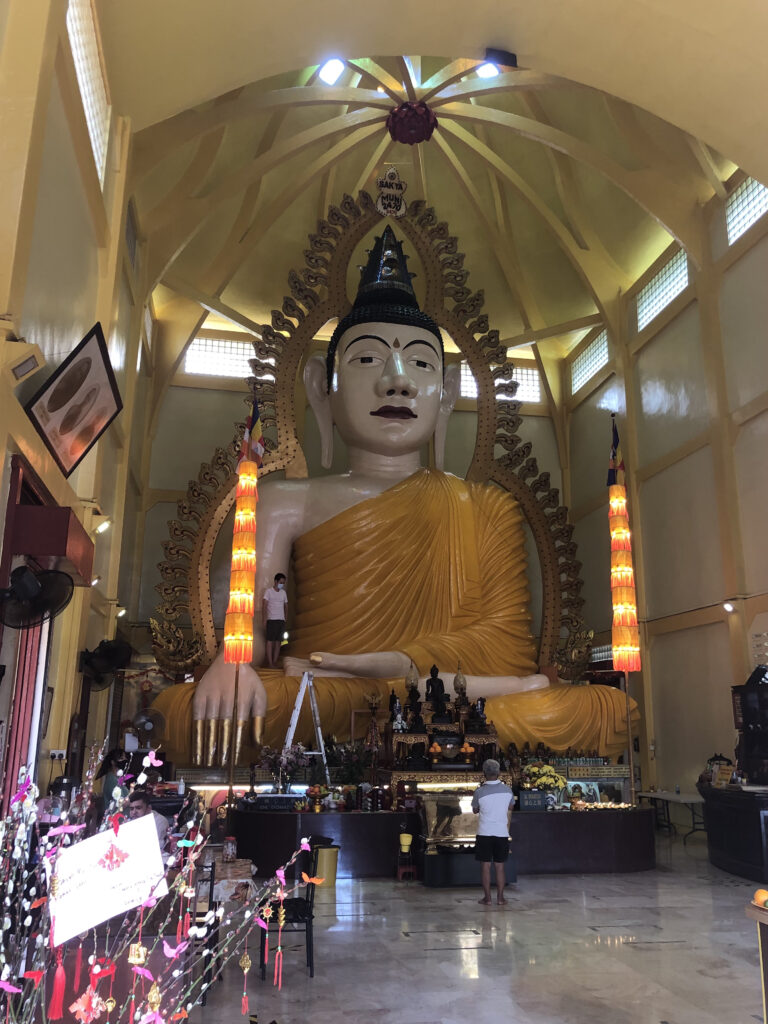
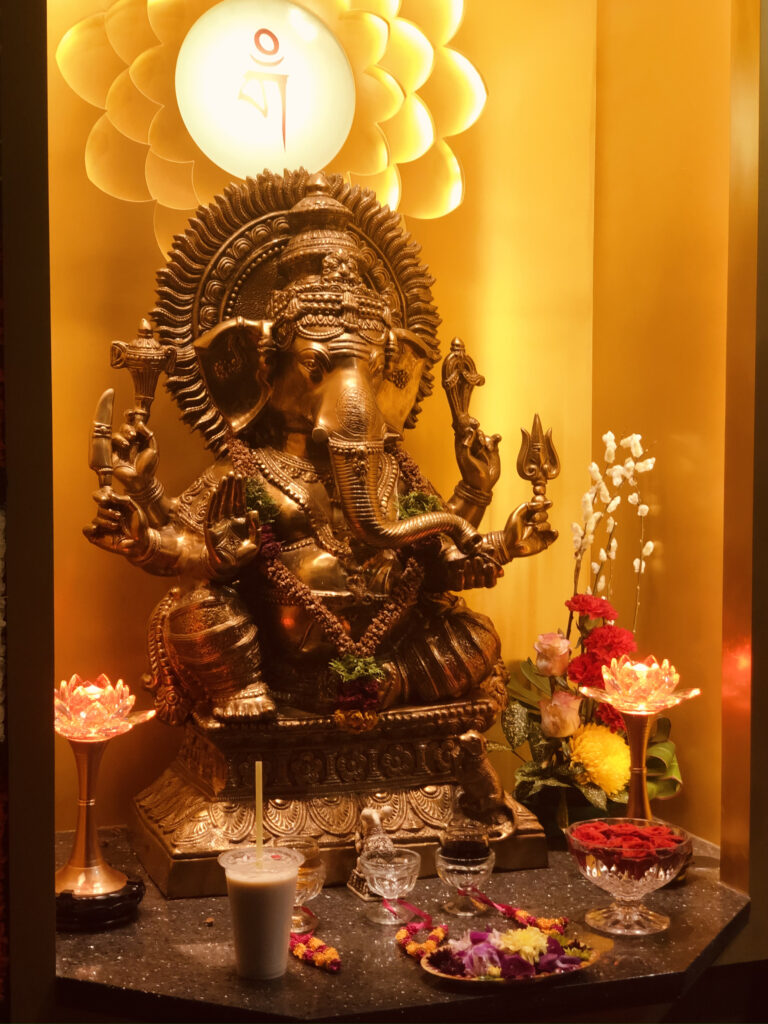
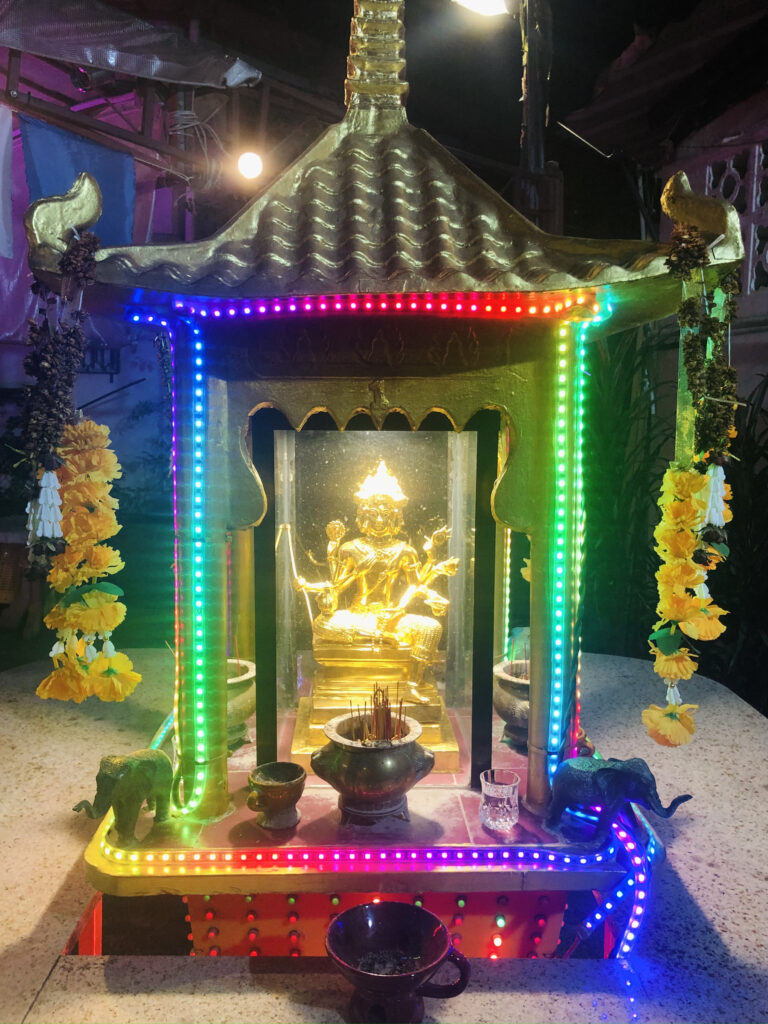
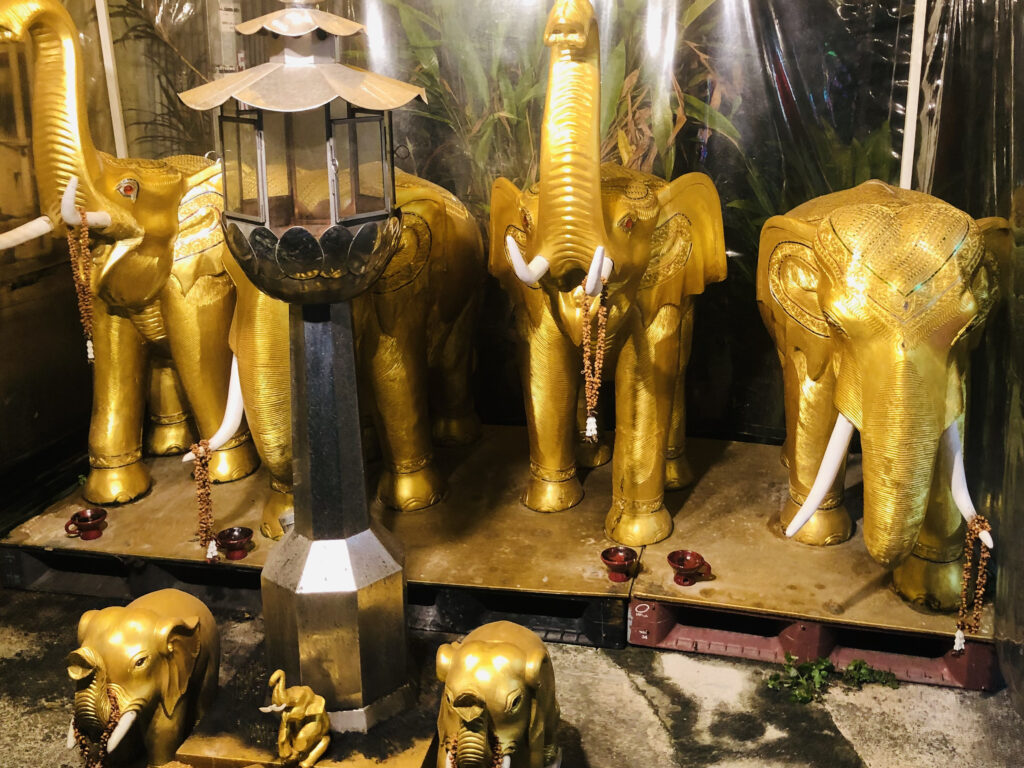
宗教は違えど、超越的な存在に祈るという行為、気持ちは人種を超えて変わりません。異なる宗教が並びたち、僕の知っている範囲では、それなりに争いなくやっている光景は素敵なことだと思います。僕は超越的な存在は信じていますが、宗教的かというと全くです。多くの日本人もそうなのではないでしょうか。葬式は仏式でおこない、正月には神社に詣で、なんならクリスマスも祝います。このごった煮的感覚、悪く言うとカミに対して節操がない感じはやはり「八百万のカミ」という感覚、考え方に根ざしていると思います。そもそも『神』はどこから来たのか?ということですが、 漢字の「神」は、祭祀を意味する「示」に音符「申」を付した字で、祭祀および祭祀対象である神霊の類を示すとあります。祭祀という時点で少し権力の匂いがします。では音として『カミ』はというと、結果からいうとハッキリしたことはわからないとのことです。色々な説はあるようです、【上・カミ】神は天上にいるから?ちょっと全てに霊性が宿るという感覚とは違うか?【鏡・カガミ】鏡は神社において御神体として祀られていたり、三種の神器の一つでもあります。御神体としての鏡を覗いた時、そこに映る己の中にこそ神が在る、という考え方は、その通り!と思いますが、そもそも鏡自体が大陸から輸入されたものなので、カミという言葉より鏡の方が大分新しいかなと思います。個人的にはアイヌ語の【カムイ】から来ているのではと妄想しています。アイヌが直接的に縄文人というわけではありませんが、古くからある言葉で使われる超常の存在を示す言葉の音を、大陸から新しくやってきたコンセプトに当てはめた、なんてこともあるかもしれません。ちなみに英語の「God」はゲルマン語で元々「呼ぶ」を意味する印欧語の「ghau」という言葉または、「gießen」(供え物をそそぐ)を意味する言葉から派生したものとされています。
Although religions are different, the act and feeling of praying to a transcendent being is the same regardless of race. I think it is wonderful to see different religions standing side by side, and as far as I know, they are doing so without any conflict in Singapore. I believe in a transcendent being, but I’m not religious at all. I think many Japanese are the same way. We hold funerals in the Buddhist style, visit shrines on New Year’s, and even celebrate Christmas. I think this sense of hodgepodge, or to put it badly, lack of control over the kami(god), is rooted in the sense and concept of “Yaoyorozu no kami” (In Shintoism, it’s believed a god exists for everything.).
Where did the word “Kami” come from in the first place? The Chinese character for “God” is a combination of the Chinese character for “ritual” and the phonetic character “shu,” which indicates rituals and the divine spirits that are the objects of rituals. The word “ritual” smacks of power. As for the sound of “Kami,” the result is that we don’t know for sure. There are various theories, such as [kami=upward, celestial] because God is in the sky? It’s a bit different from the sense that everything has spirituality? The mirror[kagami] is enshrined as a sacred object in shrines and is one of the three sacred treasures of shintoism. When you look into the mirror as a sacred object, you will see that the god is in your reflection. I agree with the way of this thinking, however, mirrors themselves were imported from the continent, so I think the word “kagami” is much newer than the word kami. Personally, I have a fantasy that it comes from the Ainu word “Kamuy“. It is not that the Ainu are direct descendants of Jomon, but it may be that the sound of the word used in the old language to indicate supernatural beings was applied to a concept newly arrived from the continent. Incidentally, the English word “God” is said to have been derived from the Germanic Indo-European word “ghau”, which originally meant “to call”, or “gießen”, meaning “to sprinkle an offering”.
『古事記』には、三〇〇余りの神が登場します。何故そんなに多くの神が存在し得たかというと、やはりそれより遥か以前、旧石器時代に始まり縄文時代に醸成されたアニミズムのベースがあったからです。「八百万のカミ」という言葉が示すとおり、日本では八百万、全てのものに霊性が宿ると考えられています。山や巨木は神社の御神体にもなっていますが、逆にいうとそこに巨木等があったから、そこが神社になったのです。僕も巨木や磐座はとても好きなのですが、自分より遥か昔からある存在を前にすると、宇宙や自然の力を感じ、自然と畏怖と尊敬の念が湧き上がっています。日本は自然に恵まれさらに四季が移ろいゆきます。そうした豊かな環境やその変化に対する鋭敏な感覚が縄文時代を通じて日本文化のベースとなっているアニミズム的な感覚を創りだしたのだと考えます。
さらにアニミズムの考え方はロジカルな思考としても筋が通るものだと僕は考えています。 イギリスのロマンティシズムを代表する詩人ウィリアム・ブレイク。その有名な詩『無垢の予兆』の一節です。
一粒の砂に世界を見、
一輪の野の花に天を見る。
汝の掌に無限を捉え、
一時の中に永遠を見よ。
一粒の砂も惑星を構成するのと同じ物質からできています。全ての物質は宇宙に流れるエネルギーの密度が上がり固着しているもなのです。物質は時間が経てば必ず崩壊します、しかしそれを構成していたエネルギーは失われることはなく、また地球の宇宙の中を巡っていくのです。また電子顕微鏡などで砂つぶをみれば、原子核の周りを電子が巡り、まるで惑星が恒星の周りを公転するのと同じ様相を見せます。極大と極小は相似形、宇宙/自然は無駄を作らず、全てがフラクタル的なデザインとなっています。一粒の砂、一枚の葉の中にも自然の力を感じ、それを畏怖、崇敬するアニミズム的感覚は、肌感としての感覚としても、科学的にみても非常に納得がいくことだと思います。
In the Kojiki (Records of Ancient Matters, early Japanese chronicle of myths), there are more than 300 gods. The reason for the existence of so many gods is that there was a base of animism that began in the Paleolithic period and was fostered in the Jomon period, long before that. As the phrase “Yaoyorozu no kami” suggests, in Japan, spirituality is believed to reside in all things. Mountains and giant trees are also used as Shinto shrines, but in other words, they became Shinto shrines because there were giant trees there. I also like giant trees and rock formations very much. When I am confronted with an existence that has existed far longer than my own, I feel the power of the universe and nature, and naturally feel a sense of awe and respect. Japan is blessed with nature, and the four seasons are always changing. I believe that such a rich environment and a keen sense of its changes created the animistic senses that have been the basis of Japanese culture since the Jomon period.
Furthermore, I believe that the idea of animism makes sense as a logical thought. William Blake, one of the most famous poets of British romanticism. Here is a passage from his famous poem, ” Auguries of Innocence”
To see a World in a Grain of Sand
And a Heaven in a Wild Flower
Hold Infinity in the palm of your hand
And Eternity in an hour
A grain of sand is made of the same material that makes up a planet. All matter is the result of the increased density of energy flowing through the universe and adhering to it. Matter always disintegrates over time, but the energy that made it up is never lost, and it continues to circulate through the Earth’s universe. Also, if you look at a grain of sand with an electron microscope, you can see electrons circling around the nucleus, just like a planet orbiting a star. The extreme large and the extreme small are similar, the universe/nature does not create waste, and everything has a fractal design. We can feel the power of nature in a grain of sand or a leaf, and the animistic sense of awe and reverence for it is very convincing, both as a feeling on the skin and from a scientific point of view.
さて今回はサブカルチャの話までたどり着きませんでした。カミがどう零落し、サブカルチャに至るかという話は次回で。
Well, I didn’t get to the point of Japanese subculture this time. Next time, I’ll tell you how Kami’s fall and subculture came to be.
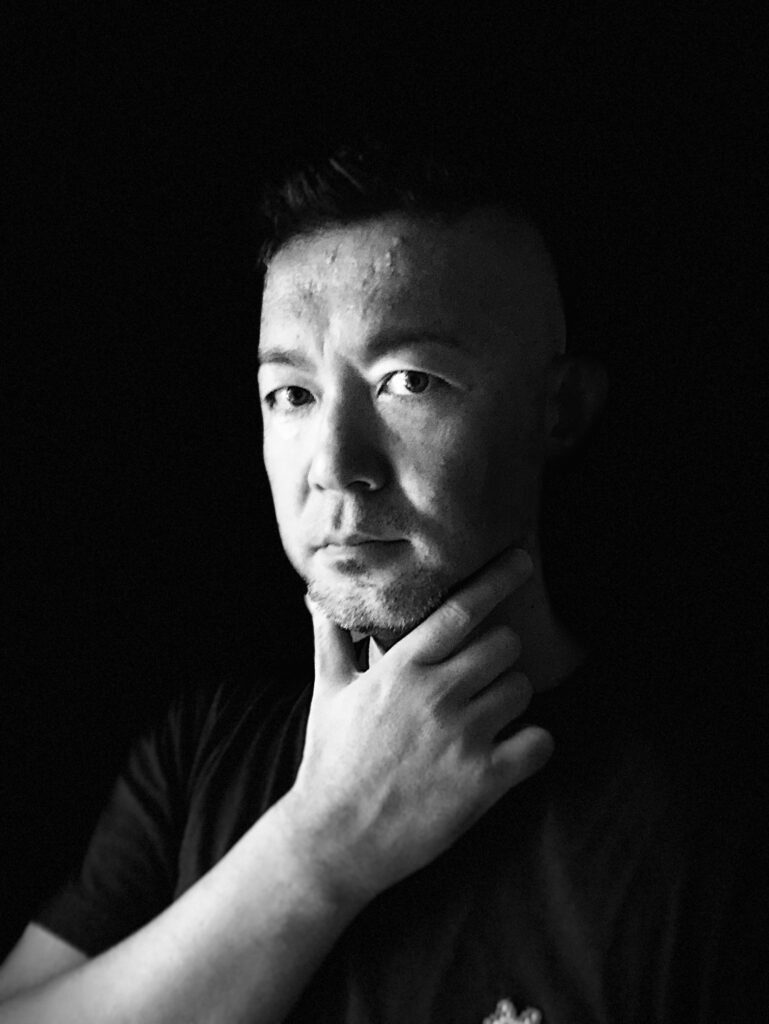
小林 武人 ポストデジタル・アーティスト
Taketo KOBAYASHI
Post-digital artist
ARTSTATION
Taketo Kobayashi (artstation.com)
Instagram ID
@humanoise
NPO法人JOMONISM 代表
https://humanoise.artstation.com
慶應義塾大学 環境情報学部卒。東京工科大学クリエイティブ・ラボ、株式会社ゴンゾを経てフリーランスに。現在は“ポストデジタル・アーティスト”として、CGや3Dプリント等のデジタルツールを“筆”として使いこなし、立体作品から映像まで幅広く制作。海外でも積極的に活動しており、美術家 坂巻善徳 a.k.a. senseとのコラボレーションプロジェクト“XSENSE”では、デジタル作品をストリートアートに活かし、ミューラル(壁画)を制作(コロラド州、デンバー)。また、独自の世界観のアニメーションを舞台美術として使い、コンテンポラリー能劇団とコラボレーションで公演も行った(サンフランシスコ、デンバー)。
自身の作品制作の他に、NPO法人JOMONISMが行う”ARTs of JOMON”展のキュレーションも担当。縄文文化から影響を受けた現代美術作家を世界に紹介し続けている(青森県立美術館、スパイラルガーデン、デンバー国際空港、クアラ・ルンプール等)。
目に見えないモノ、感情、エネルギー、意識の次の次元…等をカタチにすることがミッション。
現在はシンガポール在住
職歴・作品履歴(抜粋)
2004年
TVアニメーション「岩窟王」:背景デザイン、モデリング担当
2005年
スズキ「バーグマン」WEBプロモーション:バーグマン、モデリング担当
2007年
NHK アニ・クリ「火男(ヒョットコ)」:デザイン、モデリング担当
2012年
「MYSTICAL ABYSS」
アメリカ、サンフランシスコ、コンテポラリー能劇団Theatre of Yugenの公演、Mystical Abyss でオリジナルアニメーション制作、ライブプロジェクション担当
2013年-
アメリカ、デンバー、Art Across Cultures, Hope Onlineなどと共同で公演に参加。デンバーアート・ミュージアム等でアニメーションのプロジェクションを担当
2014年
2月 NPO法人JOMONISM企画「ARTs of JOMON展」@青森県立美術館、キュレーション担当
5月 シンガポール南洋工科大学3DPコンペティション参加。カンファレンス招待
11月 企業コラボーレションアート参加:オークリーストア原宿店にて作品展示
2015年
1月 NPO法人JOMONISM企画「ARTs of JOMON展」@スパイラルガーデン、キュレーション担当
2017年
“ARTs of JOMON -Hyper Subculture-” 展 キュレーション担当
伊勢丹 the ジャパンストア、クアラルンプール、マレーシア
2018年
”YouFab Exhibition – Imagination Manifests”@青年廣場 HongKong “More Than Human”プロジェクト、3Dプリント義足を展示
2019年
グループ展『童心』出展 銀座ホワイトストーン・ギャラリー
2020年
「Lights to the Night」アーティストに選出。シンガポール、アジア文明博物館にプロジェクション・マッピング
受賞歴等
オリジナルアニメーション『祭』(2010)
シーグラフ・アジア アニメーションシアター入選
YAOYOROZシリーズ『薬師如来』(2013)
3Dプリント用3DCG作品。日本図学会モデリングコンテスト、入賞
『SC1-EXP』(2014)
3Dプリント作品に映像をプロジェクション・マッピングしたインタラクティブ作品。
逗子国際プロジェクション・マッピング・フェスティバル、グランプリ
More Than Human『type-Unicorn』(2015)
3Dプリント義足。Ufab Global Creative award、ファイナリスト
“Eisen Herz”(2016)
構造計算を用いた3Dプリントミニ四駆カヴァー
Ufab Global Creative award、ファイナリスト
Taketo Kobayashi
Post-digital artist
ARTSTATION Taketo Kobayashi (artstation.com)
Instagram ID @humanoise
After having experience of 3D graphics and animation at Tokyo Institute of Technology creative laboratory, and Gonzo Co., Ltd., Taketo started his own project as an artist. Using digital technology like CG, 3D printing as his “brush”, Taketo creates a wide variety of artworks from 3D printed sculpture to animation. In a collaboration project XSENSE, Taketo utilizes CGI in street art to create murals(Denver, CO, USA), also using his unique style animation for stage design and collaborated with contemporary Noh theatrical group. In addition to creating his own artworks, Taketo curates the group art show “ARTs of JOMON” hosted by Japanese non-profit JOMONISM, keep introducing contemporary artists/artworks influenced by ancient Japanese Jomon culture.(Aomori Museum of Art / Spiral Garden / Denver International Airport / Kuala Lumpur)
It is Taketo’s mission to make invisible things, emotions, energy, next dimensions of consciousness into “shapes”.
Project/Art history(excerpt)
PROJECTS Digital G-O-D, UltraSuperNew gallery, Singapore, Jan 2020
Haw Par Villa RE•MIX
Chinese Cultural Centre, Singapore , Jan 2020
”Light to Night Festival” Projection mapping at Asian Civilization Museum, Singapore , Jan 2020
A SIGN OF THE TIMES EXHIBITION, Singapore , Jan 2019
”ARTs of JOMON” exhibit @ISETAN KL, Malaysia , Aug 2017, curation&direction
“Colorado Crush”, a mural festival in Denver, CO. Sept 2016, created artwork
“DMS” Collaboration with Canon June 2015, created&exhibited 3D printed prosthetic leg
”Oakley Exhibition” Exhibited artworks at Oakley store Harajuku, Tokyo, Oct 2014
AWARDS “Eisen Herz” Ufab Global Creative award Finalist. 2016. 3D printed cover for “Tamiya mini 4WD” using generative design
“More Than Human type-Unicorn” a 3D printed prosthetic leg. Ufab Global Creative award Finalist. 2015
“SC1-EXP” Zushi International Projection Mapping Competition, Grand Prix. 2014
“Yakushi-Nyorai”(2013)
3DCG model for 3D printing. Winning work at Digital modeling competition held by Japan Society for Graphic Science
Original CG animation ‘Matsuri’(May 2010)
Design, modeling, production coordination. A CG animation based on Japanese ‘Jomon’ culture. Created for promotion of Aomori Prefecture. Accepted at Siggraph Asia 2010. (On VIMEO: https://vimeo.com/25144961)